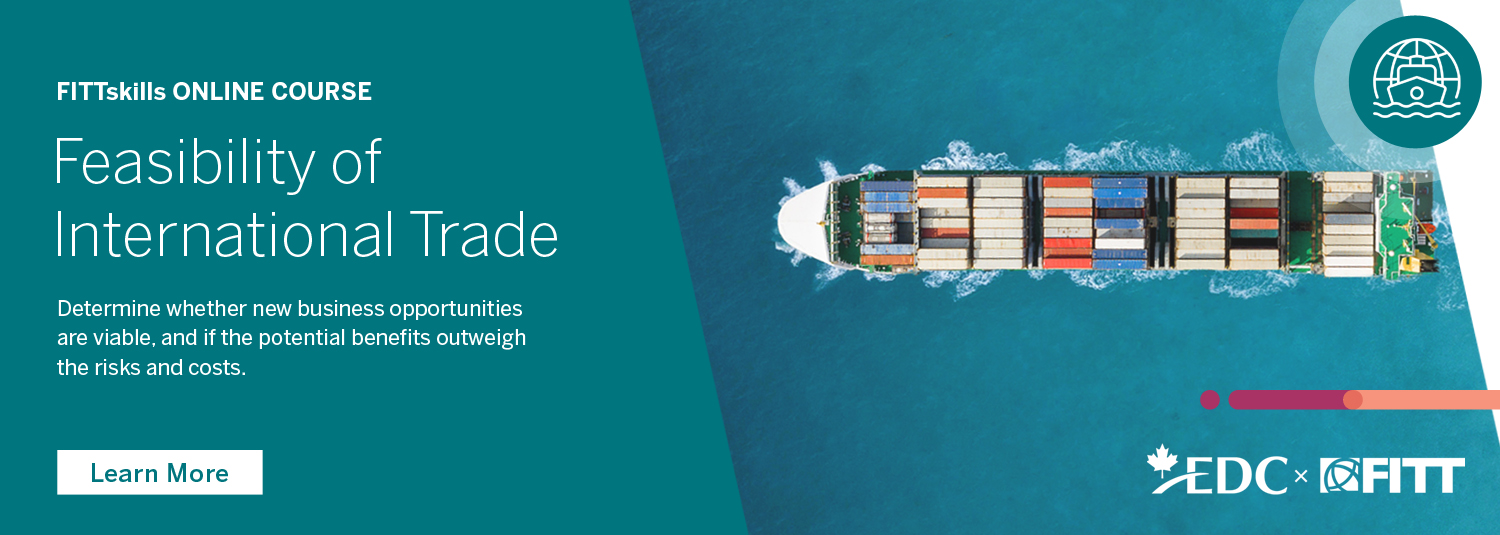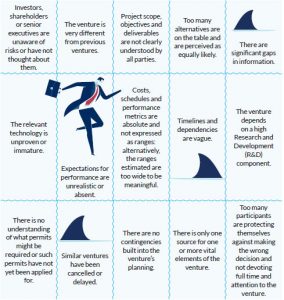
Commercial risk, currency / foreign exchange risk and foreign physical asset risk are just some of the many risks facing any global business. Without a careful analysis of specific risks and a risk management strategy, an enterprise can face significant loss.
The biggest risk with any business venture is that the organization has no appreciation of risk or how it can affect them.
Identify key risks
Risks refer to events that cause problems if they take place. Identifying risk can start with either the source of the problem or with the nature of the problem. Risks can also be related to threats such as the threat of losing money, the threat to the protection of privacy, or the threat to physical safety.
When either the source or the problem is known, it is possible to investigate the events that a source may trigger or the events that can lead to a problem. For example: stakeholders withdrawing during a project may endanger funding of the project; privacy information may be stolen by employees; or an earthquake may destroy a subsidiary.
Identify the potential risks in the target market. These risks can be categorized in a general way as affecting property, income, liability and personnel. Risks can also be categorized by economic and political exposure.
3 Types of risks typically involved in any business venture:
1. External risks (unpredictable and uncontrollable)
- Regulatory, e.g. unanticipated government intervention
- Natural hazards, e.g. storms, floods, earthquakes, etc.
- Accident, vandalism or sabotage, e.g. tampering with medicines
- Unanticipated environmental or social impacts as a result of the venture
- Failure to complete project because of flaw in infrastructure, design, financing (bankruptcy of one of the parties), or planning
- Failure because of political unrest
- Threats to health or public safety from contamination or disease
- Market risks, e.g. availability of inputs, cost fluctuations, competition, honouring of agreements
- Operational, e.g. maintenance, suitability, safety
- Environmental or societal impacts of the company’s activities
- Currency fluctuations, inflation, changes to taxation
2. Internal Risks (non-technical but controllable)
- Management, e.g. insincerity, incapacity, inadequacy, loss of control, incompatibility of goals, staff changes, inappropriate structure, poor policies, inadequate planning, unrealistic scheduling, no coordination
- Excessive reliance on one individual for a critical part of the project (especially in smaller organizations)
- Human error, e.g. confusing Imperial and metric systems of measurement
- Delays due to regulatory approvals, labour shortages, poor productivity, work stoppages, material shortages, late deliveries, unforeseen conditions, accidents, sabotage, start-up problems
- Cost overruns due to delays, inappropriate procurement, pay negotiations, poor management, contractor claims, underestimates
- Cash flow squeezes, interruptions or insolvency
- Loss of profits or other benefits arising from other risks
- Changes in technology render part of the venture obsolete, parts are discontinued, competitors introduce better technologies, new technologies are too complex
- Technology does not perform as required in terms of error rates, crashes, stability, reliability, etc.
- Technology is not able to fulfill the role expected of it in products, processes, logistics, delivery, marketing, service, etc.
- Design problems arise because of poor information, inexperience, an inadequate process, lack of detail, too many change requests, or a conflict between design and execution
- The overall complexity is beyond the management capabilities of the organization
Want to learn more about how to mitigate possible risks by developing and implementing strategies and activities to monitor and manage them? Check out the FITTskills Feasibility of International Trade online course!
3. Legal Risks (generally controllable)
- A company’s licences and patent rights are not respected: IP is copied by others because of inadequate legal protection
- Contractual difficulties due to misinterpretation, misunderstanding,
- Inappropriate contracting strategy, wrong contract type
- Outsider or insider lawsuits
- Lawsuits against competitive practices or monopolies
- Force majeure (unforeseeable circumstances, such as war or natural disaster)
Lists Source: Flyberg, Brent, “From Nobel Prize to Project Management: Getting Risks Right”
Before making the decision to move forward with a new global venture, most enterprises have completed a thorough analysis. Successful enterprises continue to protect their operations and their profitability through continual risk analysis and planning.
In a rapidly changing environment, no risk management plan is ever final.
The early warning signs that you need a risk management strategy
It is important to conduct regular evaluation of your risk management program and take into account any changes in the nature and degree of the risk taking place in the target market. Risk management programs need to be adjusted where necessary. Update the results of risk analysis and management plans to assess whether the security controls that were established still apply, and to evaluate possible changes to risk levels in the business environment.
It is important to conduct frequent risk assessments and calibrate mitigation strategies.
Stay tuned for the next article coming soon: 9 Steps of managing the risks facing any global business. Get a detailed step-by-step plan on how build a comprehensive risk mitigation strategy.







disqus comments